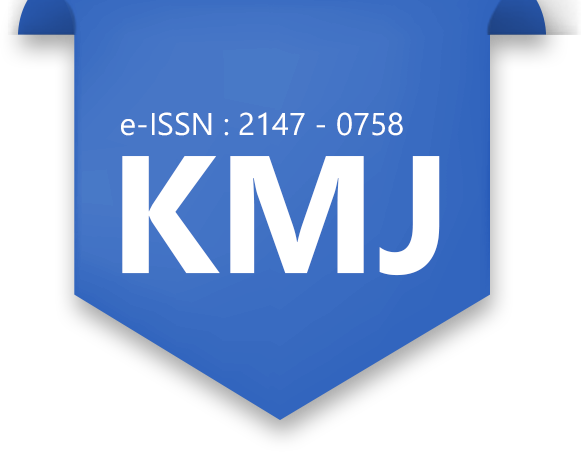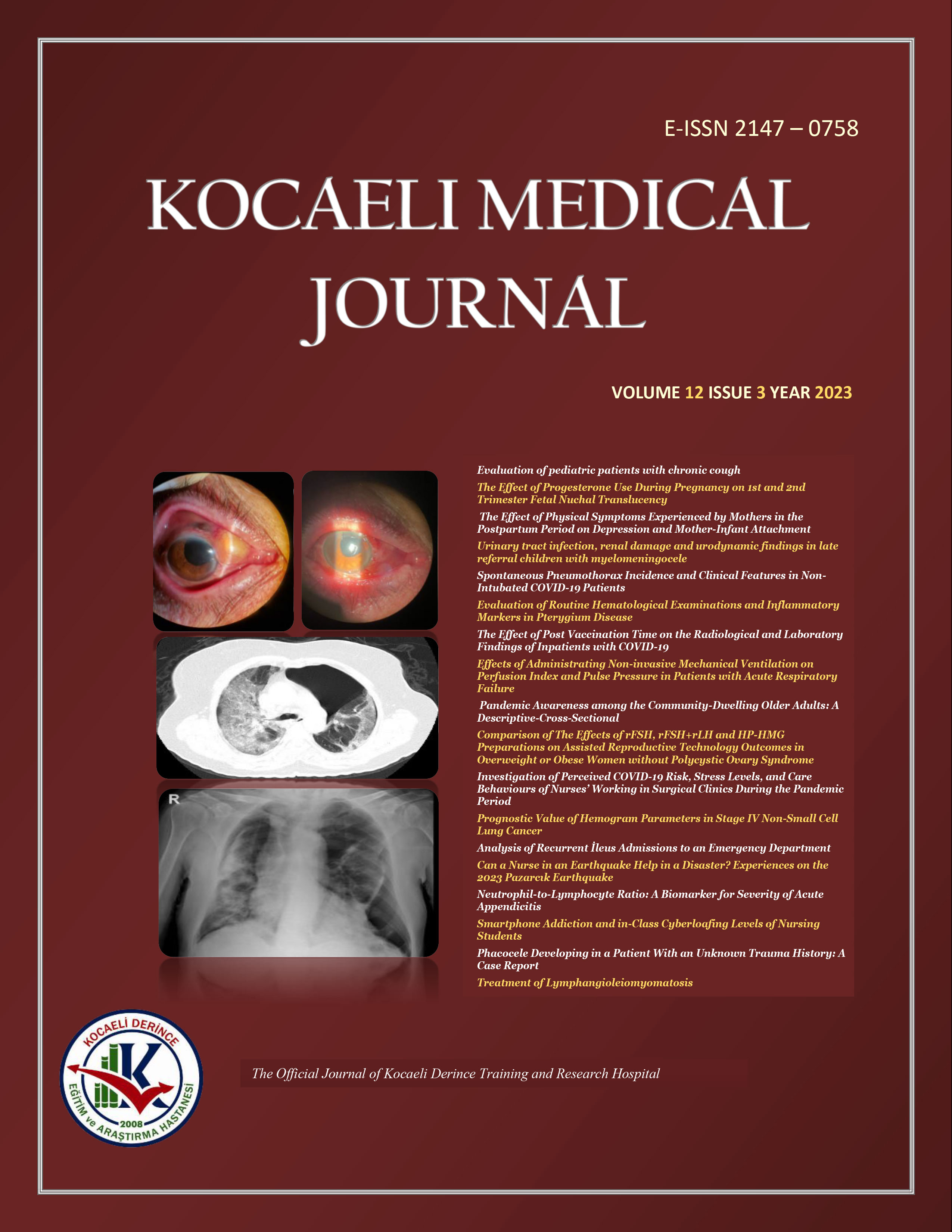
Evaluation of Ultrasound Elastography Findings in Gynecomastia Patients
Samet Genez1, Nuray Voyvoda2, Tülay Özer11University of Health Sciences, Kocaeli Derince Training and Research Hospital, Department of Radiology, Kocaeli, Turkey2University of Health Sciences Kartal Dr. Lütfi Kırdar City Hospital Department of Radiology, Kocaeli, Turkey
INTRODUCTION: We aimed to evaluate the efficacy of ultrasound elastography in the diagnosis of gynecomastia and to identify its types in adult patients.
METHODS: A total of 26 adult patients diagnosed as gynecomastia were included in the study.All patients were questioned in terms of diseases that may cause gynecomastia and drug use history. The control group consisted of age-matched 30 healthy individuals without gynecomastia. Body mass index (BMI) values were measured and recorded in both patient and control groups. The dimensions of the gynecomastia tissue were calculated via B-mode ultrasound and the pattern (nodular, dendritic, diffuse) of gynecomastic tissue was analyzed. The strain ratio was recorded using ultrasound elastography. In the control group, the region of interest (ROI) was inserted into the retroareolar rudimentary breast tissue and into the reference adipose tissue at the same depth, and strain ratio was recorded.
RESULTS: The strain ratio was significantly higher in the gynecomastia tissue (p<0.05), compared to the rudimentary breast tissue. There was a statistically significant difference between the strain ratio and the dimension of gynecomastia patterns (p <0.05). Strain ratio and gynecomastia area were significantly higher in diffuse gynecomastia compared to other patterns.
DISCUSSION AND CONCLUSION: Ultrasound elastography supports B-mode ultrasound in the diagnosis of gynecomastia and identification of its types, thereby, it contributes to the diagnosis
Jinekomasti Hastalarında Ultrason Elastografi Bulgularının Değerlendirilmesi
Samet Genez1, Nuray Voyvoda2, Tülay Özer11Sağlık Bilimleri Üniversitesi, Kocaeli Derince Eğitim ve Aratırma Hastanesi, Radyoloji Kliniği, Kocaeli, Türkiye2Sağlık Bilimleri Üniversitesi, Kartal Dr. Lütfi Kırdar Şehir Hastanesi, Radyoloji Kliniği, Kocaeli, Türkiye
GİRİŞ ve AMAÇ: Jinekomasti tanısı alan erişkin hastalarda jinekomasti tanısında ve tiplerinin belirlenmesinde ultrason elastografinin (UE) etkinliğinin değerlendirmesi ve elastografinin tanıya katkısının araştırılması amaçlanmıştır.
YÖNTEM ve GEREÇLER: Çalışmaya Kasım 2016 Şubat 2017 tarihleri arasında kliniğimize jinekomasti ön tanısıyla gönderilen ve sonografik olarak jinekomasti tanısı konulan 26 hasta dahil edildi. Jinekomasti ile ilişkili olabilecek hastalıklar ve ilaç kullanım öyküsü sorgulandı. Jinekomastisi bulunmayan 30 sağlıklı erişkin kontrol grubuna dahil edildi. Hasta ve kontrol gruplarının vücut kitle indeksi (BMI) hesaplandı. B-mod ultrasonografi ile jinekomasti dokusunun boyutu ve paterni (nodüler, dendritik, diffüz) değerlendirildi. UE incelemede bu dokunun gerinim oranı kaydedildi. Kontrol grubunda ise retroareoler rudimente meme dokusuna ve aynı derinlikteki referans yağ dokusuna ROİ yerleştirildi ve gerinim oranı kaydedildi.
BULGULAR: Jinekomasti dokusunda gerinim oranı, rudimenter meme dokusuna göre anlamlı derecede yüksekti (p <0.05). Jinekomasti paternlerinin boyutları ile gerinim oranları arasında istatistiksel olarak anlamlı farklılık saptandı (p <0.05). Diffüz jinekomastide gerinim oranı ve jinekomasti alanı diğer paternlere göre daha yüksek saptandı.
TARTIŞMA ve SONUÇ: Ultrason elastografi, jinekomasti tanısında ve tiplerinin belirlenmesinde B-mod ultrasonu destekleyerek tanıya katkı sağlamaktadır.
Corresponding Author: Samet Genez, Türkiye
Manuscript Language: English












